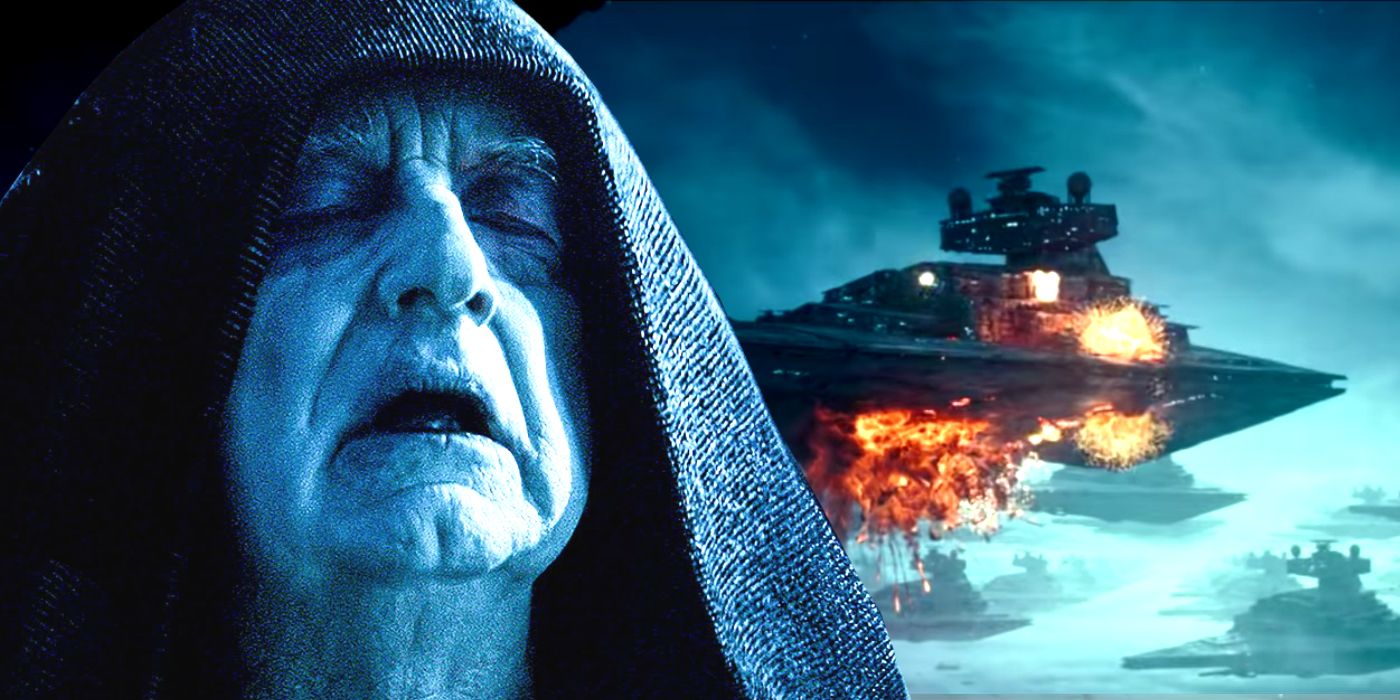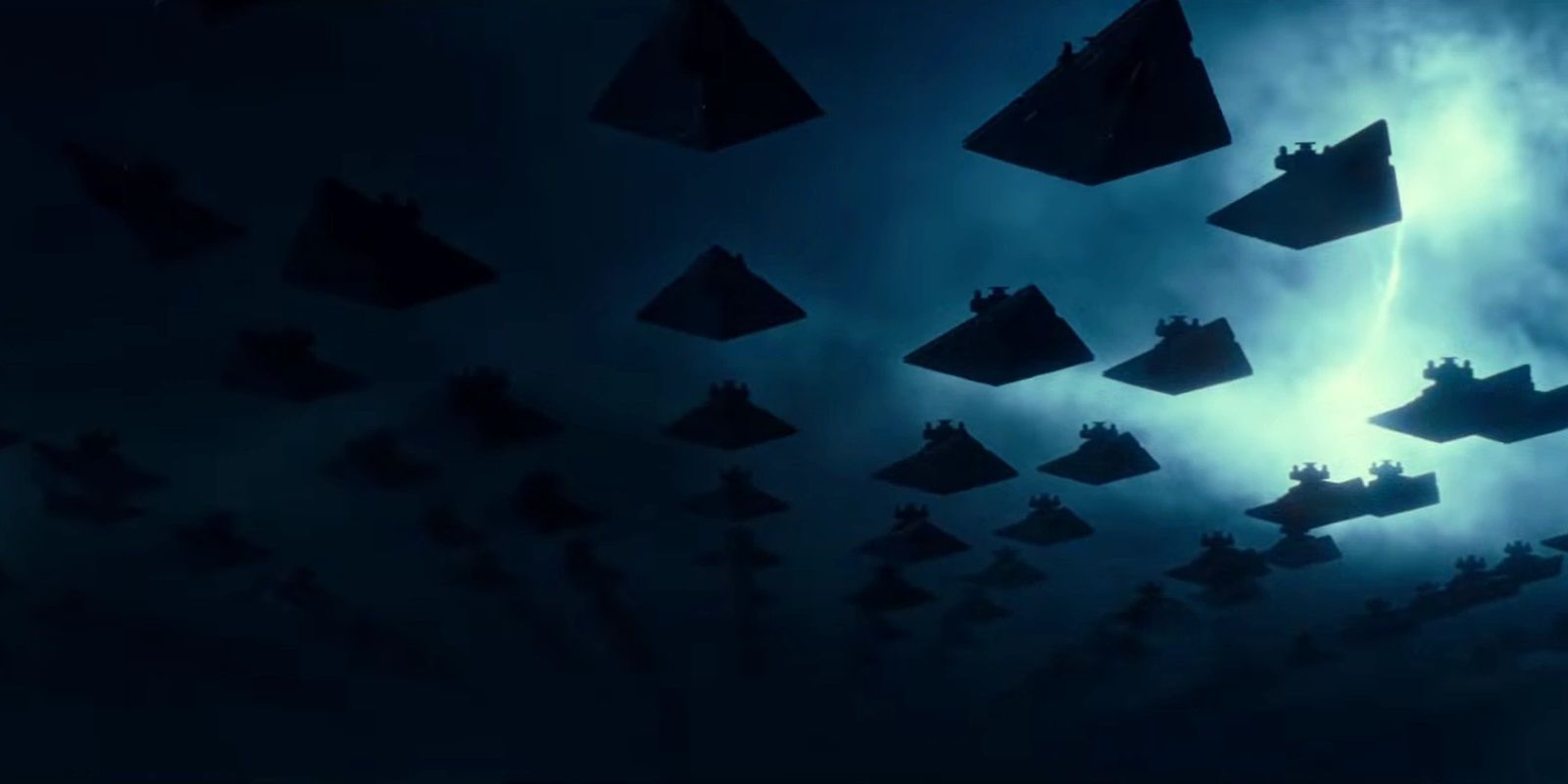Star Wars has hinted Palpatine's Final Order of world-busting Star Destroyers was always destined to fail in The Rise of Skywalker. Directed by J.J. Abrams, Star Wars: The Rise of Skywalker revealed the Emperor had been resurrected, and had been biding his time in the shadows. Cultists known as the Sith Eternal had spent the last few decades constructing a fleet of Xyston class Star Destroyers, armed with reactor-fed axial superlasers that have the potential to destroy entire worlds.
The problem, though, was that the fleet had been built in the depths of the Unknown Regions, on the hostile planet of Exegol. The harsh meteorological conditions meant the Star Destroyers were essentially groundlocked, dependent on a single transmission to help them escape the atmosphere. Once the Resistance destroyed the source of that transmission, they were trapped on Exegol, unable to depart. Palpatine's plan was dangerously flawed, made worse by the fact he'd let the First Order know exactly when he would launch his Star Destroyers. He could quite easily have launched the fleet an hour early in preparation for leaving the Unknown Regions, and had he done so the Resistance army would have been defeated.
Rae Carson's novelization of Star Wars: The Rise of Skywalker reveals another weakness in the Emperor's scheme. It features a number of scenes from the perspective of Chesille Sabrond, the Final Order captain in charge of the designated advance Star Destroyer. She had been raised on Exegol, and she had never left the Unknown Regions before. Sabrond is portrayed as ruthless and ambitious, but one thing is completely lacking from her resume: she has absolutely no military experience.
The Emperor had clearly been profoundly influenced by the military doctrines of Grand Moff Tarkin. Tarkin believed it is easier to rule through the fear of force than it is through force itself. The Death Star embodied this concept; it couldn't possibly be in every system at once, and yet Palpatine imagined every world would so fear imminent destruction that its citizens would never dare rebel. In theory, the Xyston Star Destroyers deal with that limitation, because these planet-smashing vessels could be in countless systems at once. But none of their captains have any strategic or military experience at all; they have never been tested in combat, they have never had to prove their ability to react to an enemy's plans.
In contrast, they were facing an army of people who had grown up in a galaxy at war. While many of the Rebellion's past leaders had been killed in Star Wars: The Last Jedi, several of them, such as Wedge Antilles and Lando Calrissian, were still out there. Meanwhile, the battle against the First Order led to the rise of a new generation of tacticians, such as Poe Dameron, who swiftly spotted the flaws in the Emperor's plan - and used them to their advantage. Contrast to those commanding the Emperor's fleet in Star Wars: The Rise of Skywalker, and it's no surprise that Palpatine's plan ultimately failed.


